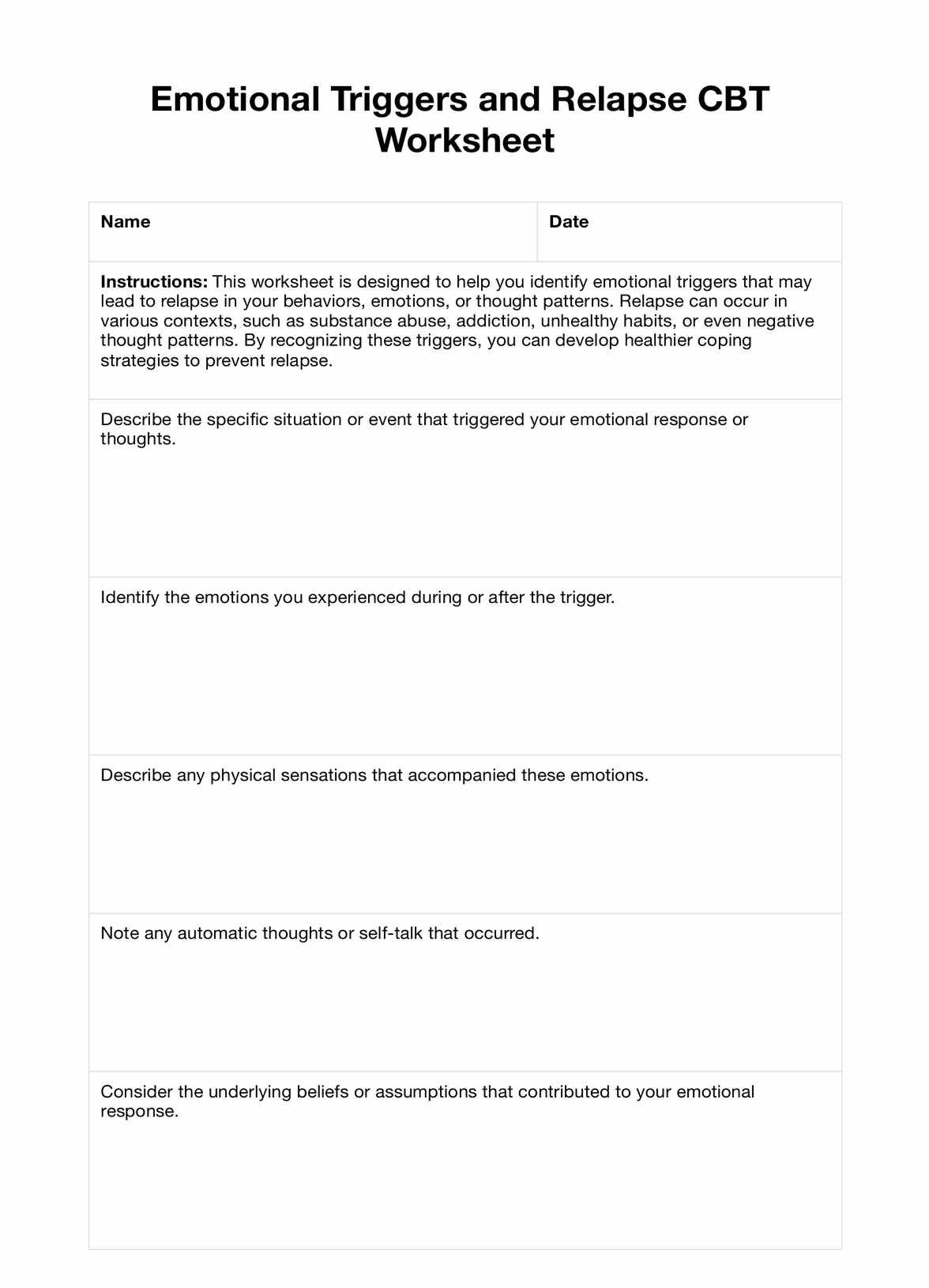This worksheet can take anywhere from 30 minutes to an hour, depending on how much time and effort your client will put into it. Remember that this process may be complicated at times, but the payoff will be worth it regarding understanding triggers and behaviors associated with relapse.

Emotional Triggers and Relapse CBT Worksheets
Use the Emotional Triggers and Relapse CBT Worksheet. Help individuals understand their emotional triggers and thought patterns with this free template.
Emotional Triggers and Relapse CBT Worksheets Template
Commonly asked questions
You can use this worksheet during any type of session, whether it is a one-on-one therapy session or group therapy. It can also be part of an intervention plan for clients at risk of relapse.
Mental health professionals, such as therapists, psychologists, psychiatrists, and addiction counselors, can use this worksheet to help clients understand the triggers that may lead to relapse. It is also an excellent tool for clients creating their relapse-prevention plans.
EHR and practice management software
Get started for free
*No credit card required
Free
$0/usd
Unlimited clients
Telehealth
1GB of storage
Client portal text
Automated billing and online payments











